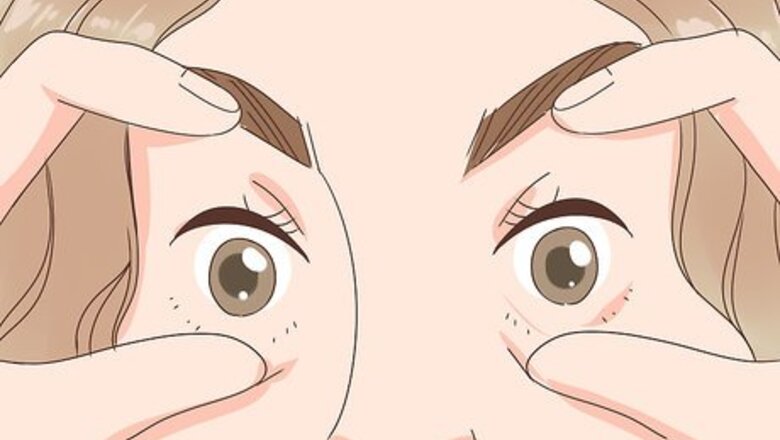
views
Making Your Eyes Water
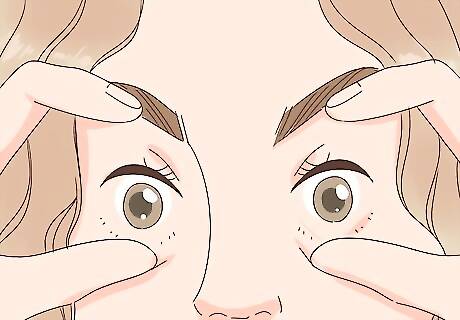
Hold your eyes open as long as you can. Keeping your eyes open will dry them out and cause them to sting. Eventually, the dryness will trigger your eyes to start watering, so try not to blink until you feel tears start to form. If you’re near a fan, try to stand so that the air is blowing into your eyes, which can make them water. If you can stare at a bright light, your eyes will water even faster.

Rub your eyes. Close your eyes and gently rub your eyelids for about 25 seconds, then open your eyes and stare at something until the tears start rolling. This might take a little practice, but once you get the hang of it, it can work wonders. Rubbing your eyes can help redden the complexion around your eye area, too, but don’t rub too hard or you could injure your eyes. Lightly place your pointer finger up to your one of your pupils. This will cause your eye to become irritated, and it may lead to tears. Be careful not to poke yourself in the eye, though.

Bite the inside of your lip. A little pain can often bring tears to your eyes, and if you need to cry on command, you can use that to your advantage. This trick is especially useful if you bite your lip while you’re already thinking of something sad. Try holding your breath as you bite the inside of your mouth, which could focus your senses on the pain. You can also pinch yourself hard on a sensitive part of your body, like on your thigh or in the space between your thumb and pointer finger. Don't bite too hard. You don't want to make your lip bleed!
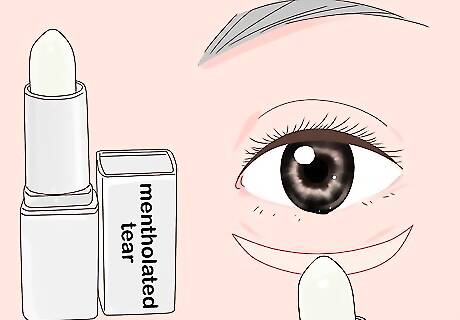
Apply a tear-producing substance under your eyes. Copy the Hollywood stars and gently rub a mentholated tear stick under your eyes. It may sting, but it's going to be very realistic. However, be very careful about not getting any in your eyes. You can also use eye drops to make it look like your face is tear-stained. Just place them right below the corner of your eyes so they believably run down your face.
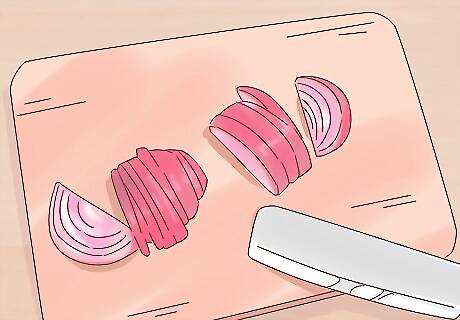
Use a cut onion. Cutting an unwashed onion is very effective in provoking tears. This method is probably best for plays though since it will be difficult to convince someone you’re sincerely crying if you pull out an onion and start cutting it before the waterworks flow! If you can escape to another room, grab a few slices of onion, and take a whiff close to your face. When your eyes start to water, return to the conversation.
Try forcing yourself to yawn. Yawning will make your eyes water and if you yawn enough then you will spark some tears. Try to hide your yawning with something that covers your mouth. You can also yawn without opening your mouth to make it more believable. Make sure not to overdo it. By overdoing it, you make it look fake.
Thinking of Things That Will Make You Cry

Think about a time when you felt really emotional. If you need to cry on command, thinking of a time when you felt sad can help put you in the right frame of mind for tears. For example, it may help to think back to the loss of a loved one or a particularly bad breakup. Other emotional triggers might include losing something special to you, getting in trouble with your parents, or missing out on something you worked really hard to achieve.
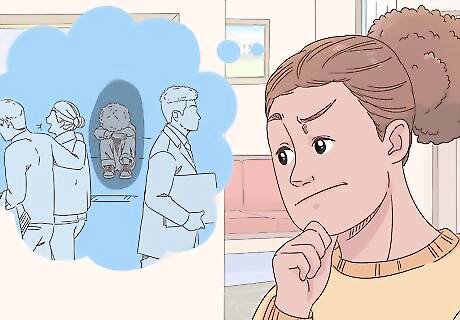
Imagine yourself being weak or helpless. Many people have fears that deep down they are not as strong as they like to believe. Picturing yourself as small and weak might put you in a vulnerable mindset that can lead to real tears. Once you tap into that feeling, let the helpless feeling flow out of you in the fear of tears. For example, a common exercise in acting classes is to imagine yourself as a small child whom no one cares for.

Create a sad scenario using your imagination. Sometimes, thinking back on a bad experience from the past can lead to real emotions that are hard to overcome. If this is the case, try to imagine something sad that could happen hypothetically rather than thinking of something personal. For instance, you could try thinking of puppies being left on the side of the road. You want to save them all, but you can only take one. As you're holding the one puppy you got to save, you look at all of the other puppies that aren't being held.

Cry happy tears if you don’t want to feel sad. Try imagining things that make your eyes fill up with happy tears, like a time someone gave you a meaningful gift, veterans being reunited with their families, or someone triumphing in the face of adversity. As long as you’re not smiling, no one will be able to tell if you’re crying happy or sad tears. If you're thinking of something sad, try not to do this too often, as it can take a toll on your mental health. Instead of pulling emotions from your own experiences, try and put yourself entirely into character.
Taking Tears to the Next Level

Make a crying face. This usually involves closing your eyes and scrunching your face up a little – simply imagine yourself through the motions through remembering what your face feels like when you do actually cry. If you’re not sure what it looks like, look in the mirror and pretend you’re crying, then pay attention to how the muscles in your face feel. Turn the corners of your lips down a little. Try to force the inner corners of your eyebrows upwards. Wrinkle up your chin like people do right before they start bawling. This may look fake if you overdo it, so try to be subtle.

Focus on your breathing. The breathing is part of what convinces people that you're upset. Start sobbing by making crying noises and take deep breaths as you do so. Breathe in constantly as if you are hyperventilating. Occasionally add a small hitch in your breathing to sound more authentic. If nobody can see you (or if everyone is blind around you), run on the spot for several minutes to cause yourself to be out of breath. This will also help to create the blotchy complexion often associated with crying.

Lower your head or cover your face to seem more realistic. Once you have the eyes tearing, the crying face and the hyper breathing going, you can add a few finishing touches, like covering your face with your hands, resting your head on a table, or hanging your head to seem like you’re sad. You could also bite your lip as if you're trying hard to stop the tears. Look away, trying to pretend you're not crying to pull off a double bluff!

Add a whine to your voice to sound like you’re crying. When you're crying, your vocal cords tighten. This leads to the thick or whiny sounds you make when you try to talk while you're crying. Aim to stutter your words and add in long intakes of breath to add to the effect. This is basically "mind over matter" and the more you act it out, the more your body will acquiesce to produce the effect you're after.

Tune out the outside world. If you want to be able to cry on command, you need to relax, breathe, and focus on the reason you’re supposed to be crying. By tuning out any distractions, you will be able to dig deeper into the emotions that you’re portraying.

Bury your face in your hands and laugh if you don't feel sad. It can sometimes be hard to tell if someone is laughing or crying if they do it correctly. While your face is in your hands, shake your shoulders and try to make your eyes a little red by rubbing them hard with your hands, and don't smile when you take your hands away. This works best on a stage when people are not close enough to see tears or your face in close detail. Make sure you don’t make any sounds, or you could give away that you’re laughing! If you do accidentally laugh out loud, try to follow it with a crying sound like a whimper or a sob, but don’t overdo it.

















Comments
0 comment